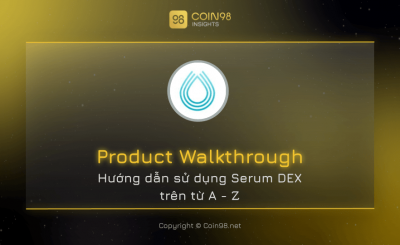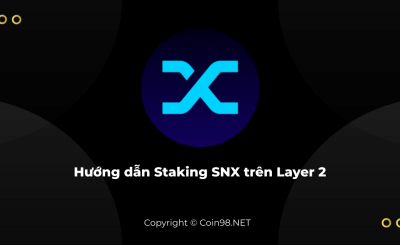Hello guys! Thorchain (RUNE) is a blockchain protocol project that helps to improve illiquidity, helping to instantly swap assets within the project’s network.
This article will help those interested in providing liquidity on Thorchain get higher, more stable returns and achieve less volatile yields.
The article is translated from a medium article by Bitcoin_Sage – an extremely active supporter of the Thorchain project. If you want to learn more about the valuable information of this project, you should follow @Bitcoin_Sage on the social networking site Twitter.
Explore more: What is THORChain (RUNE)? Complete set of cryptocurrency RUNE
Provide liquidity to the liquidity pool
There are two possible ways to provide liquidity. In the interface, you choose BEPSwap.
Method 1: Provide Symmetrical Liquidity
For example, we choose the RUNE:BNB pair. You can choose to provide symmetric liquidity by selecting “ADD BNB + RUNE”. This way of providing liquidity allows you to put your assets into the pool at a ratio of 50:50.
Method 2: Provide asymmetric liquidity
A lot of people are holding fixed assets because they don’t want to run into the risk of asset shortfall. These assets often function as a store of value but do not provide any other profit, such as rewards from transaction fees, ….
Providing liquidity on Thorchain saves them from the risk of asset shortfall, if they don’t have to balance the two assets to 50:50 before providing liquidity.
If you are not holding two types of assets with potential future price increases, but only holding one asset class, you can participate in providing asymmetric liquidity.
Thorchain will not change the amount of tokens you provide. The amount of tokens will only change if you withdraw tokens from the liquidity pool. Therefore, the only risk of asset shortfall is when you stop providing liquidity.
You can provide asymmetric liquidity by clicking “ADD BNB”. This liquidity pool will automatically swap 50% of the amount of BNB you provide into RUNE.
Be careful and note that it is not advisable to destabilize the liquidity pool by providing too much liquidity relative to the depth of the pool. That will change the exchange rate between the two tokens, leading to the parties trading the difference, which will rebalance the exchange rate, and you will have a deficit of money.
Either way, you will both provide the same proportion of the liquidity pool.
Find the most profitable liquidity pool
There are five factors to finding the most profitable liquidity pool:
Percentage of liquidity in the pool
If a liquidity provider (LP) provides an additional $1,000 of liquidity in a liquidity pool totaling $10,000, they have provided 10% of that pool’s liquidity. Therefore, they receive 10% of the liquidity pool’s transaction fee. If you continue to add liquidity to the pool, the 10% figure of the other provider will be reduced.
Trading volume in the pool
Each transaction requires a network cost and a RUNE. This one RUNE is sent straight to the liquidity providers. The more transactions in the pool, the more transaction fees go to the providers.
Percentage difference in prices of transactions
Transactions are subject to two types of fees per transaction, which are network fees and arbitrage fees. This spread is based on the ratio of trading volume to the depth of the liquidity pool. Large trades in shallow liquidity pools can cause spreads of up to 10%.
Part of this spread is kept in liquidity pools. The rest goes to the liquidity providers in the form of yield they receive.
To calculate the difference, the author often uses Delphi arbitrage tool.
Exchange rate between 2 assets
If the exchange rate between the two assets changes, the liquidity providers may receive more or less of the assets than they provide depending on the case. The yield may change if it is priced on another asset (e.g. USD).
Liquidity pool incentive bonus
Incentive rewards are an integral part of Thorchain’s system. It encourages users to keep the network safe and stable. It does this by incentivizing liquidity providers and node-running parties through rewards, based on the health of the network. In the next articles, the author will talk more about this part.
Check out the incentive in the Delphi Digital dashboard tool here.
Using tools
Now that we know what influences yield, let’s take a look at two important features that help us find the most profitable liquidity pools: Delphi Digital’s dashboard and runeddata.info.

Delphi Digital tool interface
Delphi is still in development and more features will be provided. For now, the app still provides very useful tools for liquidity providers. By sorting pools based on average transaction fees, you can find the pool with the highest spread.
A pool with high average spreads and high trading volume will have large profits. In the image above, there is one liquidity pool that stands out, which is the BULL pool, Bitcoin’s 3x long token. Pool FRM, ETHBULL, SWINGBY are also quite attractive.
In the runeddata tool, we can corroborate our previous observations by comparing transaction fees in each pool over the past weeks and months. Below, you can see that BTCBULL pool has increased its locked assets by 19% with an annual return of up to 87% (not counting the impermanent loss factor).
Example of liquidity pool operation under different market conditions
The same liquidity pools across different platforms are kept in balance by arbitrage traders. They are the ones who keep the ratio of the two assets in the pool always close to the 50:50 ratio.
If an asset increases in value, the sum of the assets of the two classes also increases. From there, arbitrageurs will swap an asset out of the pool, swapping it in other pools until the price is rebalanced.
However, these arbitrage traders are a great source of revenue for liquidity providers and node runners on Thorchain. Strong price fluctuations create many transactions, many liquidity pools need to balance the price, causing a significant increase in the amount of fees collected from transactions.
In the examples below, we will consider the liquidity pool RUNE:ASSET (RUNE and a symbolic random asset under the name ASSET).
Example 1: RUNE increases compared to ASSET
Let’s say we provide liquidity in the RUNE:BTC pool. Over the past few weeks, the price of RUNE has increased significantly. This causes RUNE swap traders to get out of the pool and trade elsewhere.
The liquidity provider will realize this based on tracking the percentage of their assets in the pool. The number of RUNE tokens decreased and the number of BTC increased compared to the original time.
Example 2: RUNE decreases compared to ASSET
Let’s say we provide liquidity in the RUNE:ETH pool. In the past few weeks the price of ETH has doubled. This causes traders to spread the ETH swap price out of the pool and trade elsewhere.
The liquidity provider will realize this based on tracking the percentage of their assets in the pool. The number of RUNE tokens increased and the number of ETH increased compared to the initial time.
Example 3: RUNE does not fluctuate against ASSET
If the price of RUNE does not fluctuate compared to ASSET, arbitrage traders will have no reason to swap, thereby reducing the amount of transaction fees the liquidity provider receives.
Strategies to earn higher returns, more stability and less risk
Liquidity providers can focus on 3 main strategies:
Maximum profit
In order for liquidity providers to achieve maximum returns, they should seamlessly switch their assets between pools. As mentioned at the beginning of the article, volatility, pool depth, trading volume and spreads are factors to consider. The two tools mentioned above will help you easily find out which pool is the most profitable.
If you are calculating to compare whether to provide liquidity or simply hold, you should include the impermanent loss factor. In addition, you can also use the tools above and pay attention to the red line named total profit.
Because impermanent loss is a rather complicated topic, the author does not cover it in this article.
Stable profit
Liquidity pools with stable returns are pools with high liquidity depth, not only on Thorchain but also on other platforms. BTC, ETH and BNB are 3 good examples.
The liquidity available in the Thorchain pool and other pools is a required condition for a stable and attractive profit. The high liquidity depth makes it possible for arbitrageurs to swap larger amounts of tokens and swap more times, thereby providing a rich source of revenue for liquidity providers, especially during volatile times. strong price movements.
Take a look at the chart below (a chart of the past returns of liquidity providers). If you are looking for a stable profit, pools with a high liquidity depth are perfectly reasonable options.
Bullish token pair
The opinions below are the author’s subjective opinions, depending on the time in the cryptocurrency field and the author’s own risk tolerance.
If you predict the price of both liquidity tokens will increase and believe that they are going at the same rate (let’s say you think they will both increase by 1000% in the next year and will make a good profit if it is a liquidity provider), you will hold both assets.
At this point, the liquidity pool will automatically balance the 2 assets that you have provided, if one token increases in price compared to the other, all you need to do is receive the transaction fee. Impermanent losses will not be a cause for concern, because we assume that the long-term growth rates of the two tokens will be equal.
How to track your profits
The community has designed several tools so that liquidity providers can easily track their profits. The author recommends that we use one of them, because they make it easy for users to understand the operating status of the liquidity pool at any time.
However, these tools are still a work in progress and errors may occur during use. Anyway, these are still essential tools for liquidity providers:
Another tool worth mentioning is runeddata.info. This tool allows you to track the past data of each liquidity pool, comparing profits with mere holdings. You can calculate future profits.
Epilogue
Through the last article, you have understood the operations of liquidity pools on Thorchain, the factors that affect the amount of fees collected by liquidity providers, strategies and ways to monitor the profits of the liquidity providers. supplier. Surely, this will be an essential guide for those who want to provide liquidity, not only on Thorchain but also on other platforms.
Have you ever provided liquidity on this platform? Are there any experiences or strategies you would like to share? Comment below and let’s discuss!
Please refer to the original post here.
Source: Full and detailed instructions for using the liquidity pool of Thorchain (RUNE)
– TechtipsnReview





